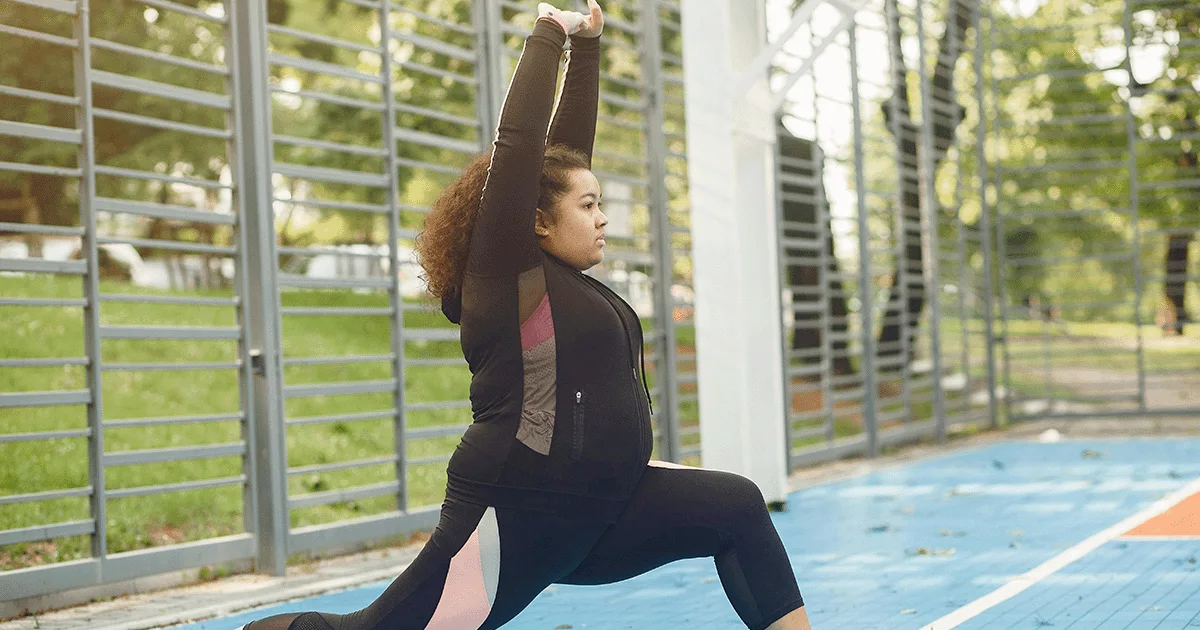Here's what we'll cover
Here's what we'll cover
Here's what we'll cover
If you read about bananas online, you'll discover a tale of two fruits. Some describe bananas as healthy and packed with helpful nutrients, while others treat the fruit as a threatening source of carbs and sugar.
You can ignore the banana-bashing horror stories. Like most popular fruits, bananas contain carbs, including fructose and other natural sugars. But like most popular fruits, bananas are also good sources of vitamins and nutrients. Check the nutrition facts, and you'll see they contain fiber, which helps digestion and slows down the gut's absorption of sugar (Slavin, 2012).
Finally, they're relatively low in calories.
Calories in a banana
A typical medium banana contains roughly 85 to 115 calories. The exact calorie count depends on both its size and its ripeness. Very ripe bananas tend to contain fewer carbohydrates and calories per 100g than underripe or ripe bananas, according to the United States Department of Agriculture (USDA). But the difference is small—in the range of 10 to 20 calories (USDA-a, n.d.) (USDA-b, n.d.). A good rule of thumb is that a small, ripe banana will have fewer calories than a large, underripe banana.
Essential minerals in bananas
As you may already know, bananas are a good source of potassium (Seth, 2014). A small banana packs 358 mg of potassium—about 8% of the recommended daily value (Sidhu, 2018).
Potassium is an essential mineral, which means your body depends on it for proper health and functioning (NIH, 2018). Among its many jobs, potassium makes sure your cells, tissues, and nerves work the way they should. It also helps regulate your blood pressure (Sur, 2021).
Research has found that most Americans aren't getting enough potassium. There's also evidence that eating more potassium-rich foods—including bananas—could help lower a person's risk for stroke and other medical problems (Seth, 2014).
Bananas are also a good source of magnesium—another essential mineral that most people aren't getting enough of (Sidhu, 2018). By some estimates, roughly half of the U.S. population isn't eating enough magnesium. This is a problem because the body needs magnesium to activate vitamin D—another critical nutrient (Rosanoff, 2012; Uwitonze, 2018).
Other vitamins and nutrients in bananas
Bananas are sources of vitamins B5, vitamin B6, and folate, which play a necessary role in the body's chemical processes. Bananas also contain about 10% of your daily recommended value of vitamin C. But there's more to their appeal. They're a modest source of calcium, choline, zinc, and several other vitamins and minerals. The benefits of eating these nutrients range from improved cholesterol and immune functioning to overall wellness (Sidhu, 2018).
Bananas and blood sugar
Most of a banana's calories come from carbohydrates—particularly natural sugars like fructose. Bananas have almost no protein or fat (USDA-a, n.d.). This has led to a lot of online speculation—or flat-out misinformation—that bananas spike blood sugar levels and so may be risky for people with type-2 diabetes or those on a low glycemic (a.k.a., low-GI) diet.
But research does not support this position. A food's glycemic index (also sometimes called its glycemic "load") refers to its impact on a person's blood sugar levels. Foods with a glycemic index (GI) of 55 or below are generally considered to have a "low" GI, which means they don't trigger a risky or rapid rise in blood sugar (Holesh, 2020).
Bananas—especially those that are not too ripe—have a GI below 55, according to the University of Sydney's “International Glycemic Index Database” (UofS, n.d.).
Research has also shown that eating a banana every day does not pose any threat to people with type-2 diabetes (Cressey, 2014). The American Diabetes Association (ADA) encourages fruit to be included in a diabetes meal plan. Bananas can fit as long as the carbohydrates are factored into the plan (ADA, n.d.).
Bananas and fiber
A banana offers about 3 grams of fiber, including 2 grams of insoluble fiber and 1 g of soluble fiber. The human gut struggles to break down fiber, so it tends to pass through us more or less undigested. But that’s actually a good thing! Fiber prevents the rapid absorption of sugar into the bloodstream and ensures our insides aren't clogged up with left-behind food particles (Slavin, 2012).
Americans need to up their fiber intake. Most of us don't even get half the recommended daily amount, which depending on a person's sex and age, varies from 14 g for young children to 38 g for men aged 19 to 51 and 25 g for women aged 19 to 51. High-fiber diets are associated with a range of health benefits, from a reduced risk for heart disease and some cancers to longer lifespans (Akbar, 2020).
Bananas don't contain as much fiber as some other fruits, such as apples or oranges. But they beat out plenty of others, including strawberries, peaches, and grapefruits. They also contain more fiber than most common vegetables (Slavin, 2012).
Other banana health benefits
Bananas, like most fruits and vegetables, are loaded with bioactive compounds. These compounds seem to play important roles in human health. Bananas contain phenolic compounds, carotenoids, plant sterols, and amines—all of which are associated with a range of health benefits (Singh, 2016).
Some of these compounds are antioxidants, which means they can block or reduce the body's load of free radicals. A high concentration of free radicals has been shown to damage our DNA, contributing to the emergence of arterial disease, cancer, and many other common health problems (Lobo, 2010; Valko, 2007; NIH, 2017).
Fun fact: banana peels and the stringy, pulpy bits people tend not to eat are some of the fruit's richest sources of these healthful bioactive compounds (Singh, 2016).
Are green bananas healthier?
Both green banana and baking flour made from green banana have become a trendy health food. A 2019 research review found that green bananas and green-banana flour may aid digestion, improve fullness, support weight management, and balance blood glucose. But most of that work did not compare green bananas to ripe yellow bananas. It may turn out that green bananas and green-banana flour are even healthier than ripe bananas, but the jury's still out (Falcomer, 2019).
The best way to eat a banana
Fruit smoothies are super popular. But there's evidence that swallowing blended or pureed fruit may not be the same as eating a fruit whole. For example, research has found that eating pureed apple instead of a whole one speeds digestion and reduces feelings of fullness—neither of which is a good thing (Krishnasami, 2020).
It may turn out that adding a banana to a smoothie is just as healthy as eating it whole. But for now, if you want to be sure you're getting all the benefits associated with bananas, it may be a safer bet to eat it whole.
Bananas for weight loss and weight management
Apart from the work on green bananas, there isn't much research on the association between bananas in particular and weight loss or weight management. But some research shows eating fruits of all kinds promotes weight loss among people who are overweight or obese (Schroder, 2010).
It’s important to understand that no single food can make you gain or lose weight— it’s the balance of the things you eat and the amount of exercise that will have the greatest impact on long-term weight loss. You probably won't see any improvements if you just add bananas to an unhealthy diet (high in sugar and saturated fats). Conversely, replacing a chocolate bar with a banana is a good idea. Some of the latest work concludes that eating whole fruit may contribute to "modest" weight loss and help you maintain a healthy weight (Guyenet, 2019).
Bananas after exercise
Sports drinks and their famous "electrolytes" are go-to recovery beverages for many athletes. But bananas also contain electrolytes, which is just a fancy term for salt, potassium, and other minerals. A very small 2018 study compared the two and found that bananas worked just as well—and in some cases, better—than sports drinks when it came to calming post-exercise inflammation and restoring or stabilizing blood-sugar levels and other markers of fatigue (Nieman, 2018).
In general, the fact that bananas are nutritious doesn't mean that you should eat them in bunches. Too much of anything tends to cause problems.
If you've been told that eating a whole banana now and then, or even every day, is somehow hurting your health, the evidence we have argues otherwise. You may want to chat first with a dietitian or healthcare provider before making changes to your diet. But eating bananas appears to be safe, low-cal, and good for you.
DISCLAIMER
If you have any medical questions or concerns, please talk to your healthcare provider. The articles on Health Guide are underpinned by peer-reviewed research and information drawn from medical societies and governmental agencies. However, they are not a substitute for professional medical advice, diagnosis, or treatment.
References
American Diabetes Association (ADA). (n.d.). Eating well. Retrieved from https://diabetes.org/healthy-living/recipes-nutrition/eating-well/fruit
Akbar, A. & Shreenath, A. P. (2020). High fiber diet. [Updated 2020 Jul 2]. In: StatPearls [Internet]. Retrieved from https://www.ncbi.nlm.nih.gov/books/NBK559033/
Cressey, R., Kumsaiyai, W., & Mangklabruks, A. (2014). Daily consumption of banana marginally improves blood glucose and lipid profile in hypercholesterolemic subjects and increases serum adiponectin in type 2 diabetic patients. Indian Journal of Experimental Biology, 52 (12), 1173–1181. Retrieved from https://pubmed.ncbi.nlm.nih.gov/25651610/
Dreher, M. L. (2018). Whole fruits and fruit fiber emerging health effects. Nutrients, 10 (12), 1833. doi: 10.3390/nu10121833. Retrieved from https://pubmed.ncbi.nlm.nih.gov/30487459/
Falcomer, A. L., Riquette, R., de Lima, B. R., et al. (2019). Health benefits of green banana consumption: A systematic review. Nutrients, 11 (6), 1222. doi: 10.3390/nu11061222. Retrieved from https://pubmed.ncbi.nlm.nih.gov/31146437/
Guyenet, S. J. (2019). Impact of whole, fresh fruit consumption on energy intake and adiposity: A systematic review. Frontiers in Nutrition, 6 , 66. doi: 10.3389/fnut.2019.00066. Retrieved from https://pubmed.ncbi.nlm.nih.gov/31139631/
Holesh, J. E., Aslam, S., & Martin, A. (2020). Physiology, carbohydrates. StatPearls . Retrieved from https://www.ncbi.nlm.nih.gov/books/NBK459280/
Krishnasamy, S., Lomer, M., Marciani, L., et al. (2020). Processing apples to puree or juice speeds gastric emptying and reduces postprandial intestinal volumes and satiety in healthy adults. The Journal of Nutrition, 150 (11), 2890–2899. doi: 10.1093/jn/nxaa191. Retrieved from https://pubmed.ncbi.nlm.nih.gov/32805050/
Lobo, V., Patil, A., Phatak, A., & Chandra, N. (2010). Free radicals, antioxidants and functional foods: Impact on human health. Pharmacognosy Reviews, 4 (8), 118–126. doi: 10.4103/0973-7847.70902. Retrieved from https://www.ncbi.nlm.nih.gov/pmc/articles/PMC3249911
Nieman, D. C., Gillitt, N. D., Sha, W., et al. (2018). Metabolic recovery from heavy exertion following banana compared to sugar beverage or water only ingestion: A randomized, crossover trial. PloS One, 13 (3), e0194843. doi: 10.1371/journal.pone.0194843. Retrieved from https://journals.plos.org/plosone/article?id=10.1371/journal.pone.0194843
National Institutes of Health (NIH). (2017). Antioxidants and cancer prevention. Retrieved May 5, 2021 from https://www.cancer.gov/about-cancer/causes-prevention/risk/diet/antioxidants-fact-sheet#r1
National Institutes of Health (NIH). (2018). National Center for Complementary and Alternative Medicine: vitamins and minerals. Retrieved April 29, 2021 from https://www.nccih.nih.gov/health/vitamins-and-minerals
Rosanoff, A., Weaver, C. M., & Rude, R. K. (2012). Suboptimal magnesium status in the United States: are the health consequences underestimated? Nutrition Reviews , 70 (3), 153–164. doi: 10.1111/j.1753-4887.2011.00465.x. Retrieved from https://pubmed.ncbi.nlm.nih.gov/22364157/
Schroder, K. E. (2010). Effects of fruit consumption on body mass index and weight loss in a sample of overweight and obese dieters enrolled in a weight-loss intervention trial. Nutrition (Burbank, Los Angeles County, Calif.), 26 (7-8), 727–734. doi: 10.1016/j.nut.2009.08.009. Retrieved from https://pubmed.ncbi.nlm.nih.gov/20022464/
Seth, A., Mossavar-Rahmani, Y., Kamensky, V., et al. (2014). Potassium intake and risk of stroke in women with hypertension and nonhypertension in the Women's Health Initiative. Stroke, 45 (10), 2874–2880. doi: 10.1161/STROKEAHA.114.006046. Retrieved from https://www.ahajournals.org/doi/full/10.1161/STROKEAHA.114.006046
Sharma, S. P., Chung, H. J., Kim, H. J., & Hong, S. T. (2016). Paradoxical effects of fruit on obesity. Nutrients, 8 (10), 633. doi: 10.3390/nu8100633. Retrieved from https://www.ncbi.nlm.nih.gov/pmc/articles/PMC5084020
Sidhu, S. & Zafar, T. (2018). Bioactive compounds in banana fruits and their health benefits. Food Quality and Safety, 2 (4), 183–188. doi: 10.1093/fqsafe/fyy019. Retrieved from https://academic.oup.com/fqs/article/2/4/183/5164297
Singh, B., Singh, J. P., Kaur, A., & Singh, N. (2016). Bioactive compounds in banana and their associated health benefits - A review. Food Chemistry, 206 , 1–11. doi: 10.1016/j.foodchem.2016.03.033. Retrieved from https://pubmed.ncbi.nlm.nih.gov/27041291/
Slavin, J. L. & Lloyd, B. (2012). Health benefits of fruits and vegetables. Advances in Nutrition (Bethesda, Md.), 3 (4), 506–516. doi: 10.3945/an.112.002154. Retrieved from https://academic.oup.com/advances/article/3/4/506/4591497
Sur, M. & Mohiuddin, S. S. (2021). Potassium. StatPearls . Retrieved from https://www.ncbi.nlm.nih.gov/books/NBK539791/
U.S. Department of Agriculture (USDA-a). (n.d.) FoodData Central: Bananas, overripe, raw. Retrieved April 29, 2021 from https://fdc.nal.usda.gov/fdc-app.html#/food-details/1105073/nutrients
U.S. Department of Agriculture (USDA-b). (n.d.) FoodData Central: Bananas, ripe and slightly ripe, raw. Retrieved April 29, 2021 from https://fdc.nal.usda.gov/fdc-app.html#/food-details/1105314/nutrients
The University of Sydney (UofS). (n.d.). Glycemic Index. Retrieved April 29, 2021 from https://glycemicindex.com/
Uwitonze, A. M. & Razzaque, M. S. (2018). Role of magnesium in vitamin D activation and function. The Journal of the American Osteopathic Association, 118 (3), 181–189. doi: 10.7556/jaoa.2018.037. Retrieved from https://pubmed.ncbi.nlm.nih.gov/29480918/
Valko, M., Leibfritz, D., Moncol, J., et al. (2007). Free radicals and antioxidants in normal physiological functions and human disease. The International Journal of Biochemistry & Cell Biology, 39 (1), 44–84. doi: 10.1016/j.biocel.2006.07.00. Retrieved from https://pubmed.ncbi.nlm.nih.gov/16978905/










